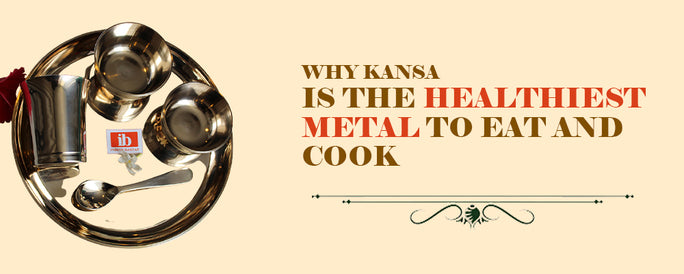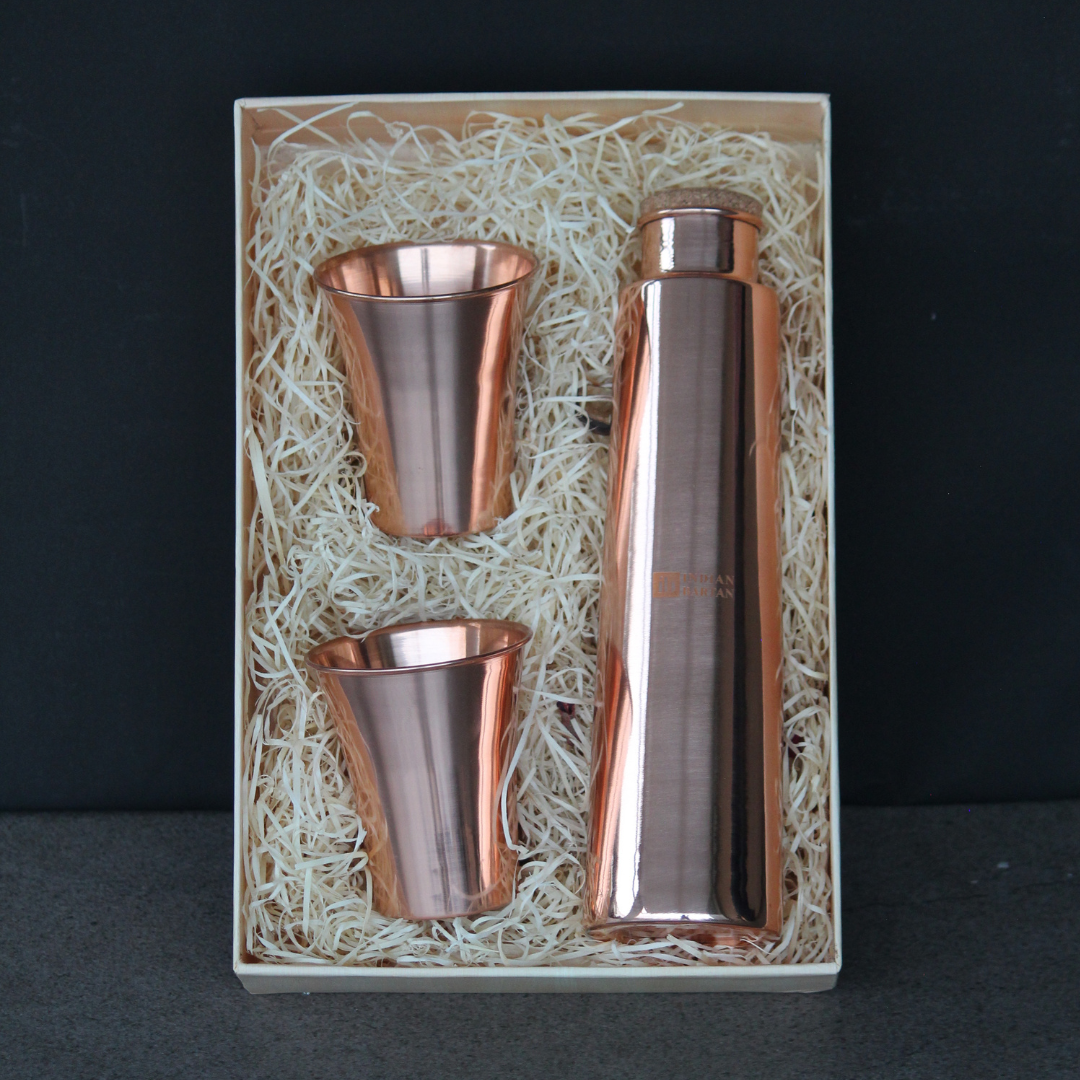
Why Kansa is the Healthiest Metal to Eat and Cook In
Share
As we all know, Kansa is one of the earliest metals discovered by mankind (second only to gold). Later, they started using it to make kitchen utensils. There are no precise details on where the Kansa kitchen utensils first appeared. It is speculated that the Turks were the ones to cast it, about the 15th century. These are calves for making coffee. Though, the cultural relics discovered during the excavations in Egypt, Russia, and Greece can be traced back to an earlier time.
Beneficial features of Kansa Eating Utensils
Useful properties prevail, otherwise, the existence of this Kansa kitchen utensils would be meaningless:
High thermal conductivity
This property of Kansa is especially appreciated by chefs. Such dishes heat up quickly and evenly, retaining heat for a long time, which is especially important for the preparation of delicate seafood dishes, as well as various desserts and sauces. Food is cooked many times faster, this allows you to save more nutrients in foods.
Improving taste
Saturated with microparticles, the food cooked in such dishes acquire a special taste that cannot be repeated in pots and pans made of any other metal.
Antibacterial action
This feature of the metal was actively exploited in ancient times. It was noticed that the food left in the Kansa Katori set lasts longer and does not spoil. The jugs for water had a disinfecting effect - in them, it did not lose its taste for a long time, it did not foul. Later, the bactericidal properties of the metal were confirmed by scientific research. The molecules kill many pathogenic bacteria that can aggressively affect the digestive system. However, at high temperatures, such dishes lose their antibacterial properties. Recently, people mostly began to drink water from a Kansa mug. It is believed that this way you can make up for the lack of this metal in the body.
Lightweight metal
This mainly applies to cookware made of copper-containing alloys, such as brass. Kitchen utensils made of pure copper are much heavier.
Durability
With proper care, Kansa eating utensils can last a long time. It is often passed down from generation to generation.
Effective antiviral and antimicrobial action of Kansa Utensils
Bronze is an alloy of copper that can kill many bacteria and viruses. Scientists think so. From time immemorial, copper has been used for medicinal purposes. It was noticed that the workers who mined copper did not get sick during the terrible epidemics of cholera, and the barge haulers, who put pennies under their heels, were infected with cholera or plague much less often.
The belief that copper is vital to health has been expressed by physicians and sages around the world for over 5,000 years. And this was confirmed by the studies. It turned out that various types of bacteria, such as the causative agent of hemophilic infection, E. coli, staphylococcus mRSA, viruses, getting on most surfaces, can live there for four to five days.
But it is quite another matter when they land on bronze containing 85-90% copper. On these surfaces, pathogens begin to die within a few minutes. Bronze, copper, and their alloys are natural, passive antimicrobial materials. It is copper that can independently sterilize its surface without the use of antiseptics. Accordingly, the higher the copper content in the alloy, the more effective its antiviral and antimicrobial action.
It's time to return to use Kansa kitchen utensils- the material that protects us from infections
If we compare all copper-containing alloys with each other, then bronze or Kansa is undoubtedly the leader in antibacterial and antiseptic properties. Compositions of tin bronze can be considered classical, in which the copper content is 85-90%, the content of tin and other components is of the order of 10-15%. For the most common brass: copper - 58-60%, zinc - about 40%.
The most antibacterial active element in the composition of these alloys is copper, its ions actively destroy microorganisms in contact with the metal.
The activity of zinc is much lower, and tin itself can be perceived as an element neutral to the development or inhibition of microorganisms. Accordingly, taking into account the percentage of copper content, it should be recognized that the effectiveness of bronze as a material that inhibits viruses and other microorganisms is much higher than that of brass, and is only marginally inferior to pure copper. In this regard, the presence of high zinc content in brass will significantly reduce the effectiveness of the antiseptic properties of the alloy.
The time has come to return the bronze utensil, both to the everyday life of every person and to public places, including hospitals and kitchenware. In the face of recurring epidemics that are sweeping the world and global pandemics, it is time to start using bronze and copper alloys again in our homes, transportation, and healthcare.
Concluding Remarks
This is all from our side! Including Kansa kitchenware definitely gives you health benefits. What do you find more important than your health and wellness? Cook and eat in such utensils for adequate nutrition, stay away from infections, diseases, and viruses-however boost your immunity!

